How to Write SEO Articles That Rank High on Google
SEO articles are the foundation of successful digital marketing strategies. By focusing on quality, optimization, and audience engagement, you can create content that not only ranks high on Google but also provides lasting value to readers. In this comprehensive guide, we’ll explore every facet on how to write SEO articles, from understanding E.E.A.T standards to crafting compelling articles optimized for both search engines and readers.
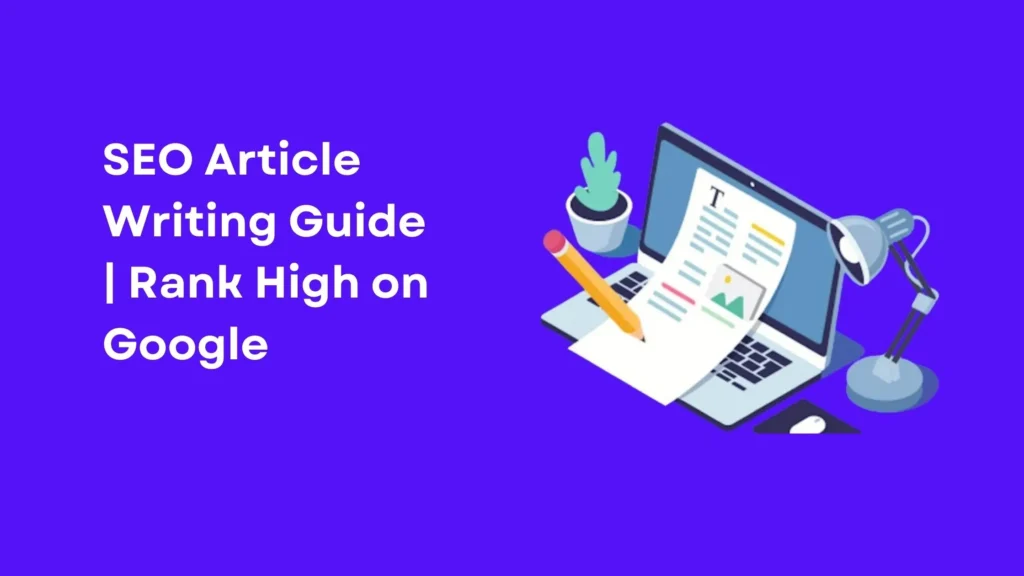
Introduction to SEO Content Writing
SEO content writing is the art of blending creativity with technical expertise to produce articles that resonate with readers and satisfy search engine algorithms. This form of writing prioritizes user intent, incorporates strategic keyword placement, and ensures readability while adhering to the latest SEO standards.
Why SEO Content Writing is Crucial in 2024
In 2024, SEO content writing is more important than ever due to the increasing competition for online visibility. Millions of articles are published daily, creating a saturated digital landscape where only the most optimized and valuable content can rise to the top.

SEO content writing helps businesses:
- Drive Organic Traffic: By targeting relevant keywords and optimizing for search intent, businesses can attract users actively searching for solutions.
- Establish Authority: High-quality content builds credibility and positions a website as an expert resource.
- Boost Conversions: By addressing pain points and providing actionable insights, SEO content turns casual readers into loyal customers.
- Ensure Long-Term Results: Unlike paid ads, which stop driving traffic when the budget runs out, SEO articles can attract visitors for months or even years.

The key to success in 2024 lies in creating content that balances technical optimization with a deep understanding of audience needs. Search engines like Google are evolving to prioritize user experience, which means that SEO content writing must go beyond keyword stuffing to focus on value, readability, and engagement.
The Role of SEO in Driving Organic Traffic
SEO content writing is one of the most effective ways to drive organic traffic—a critical metric for businesses that rely on digital visibility. Organic traffic refers to visitors who find your website through unpaid search engine results, making it a cost-effective and sustainable source of growth.
Here’s why SEO content drives organic traffic:
- Relevance: By targeting specific search queries, SEO articles match user intent, making them more likely to rank high and attract clicks.
- Longevity: Unlike social media posts or paid campaigns, which have a limited lifespan, well-optimized articles continue to drive traffic over time.
- Scalability: Once you master SEO content writing, you can replicate your success across multiple topics and keywords, exponentially increasing your reach.

SEO content also aligns with the buyer’s journey. From awareness (informational articles) to decision-making (transactional content), well-optimized articles guide users through every stage, ensuring they find your website at the right time.
Overview of E.E.A.T Standards
E.E.A.T (Experience, Expertise, Authority, and Trust) is a framework developed by Google to evaluate the quality of content and determine its ranking potential. It emphasizes the importance of credibility, accuracy, and user value, which are essential for building trust and maintaining high search engine rankings.
What is E.E.A.T and Why It Matters?
E.E.A.T is Google’s way of ensuring that users find accurate and reliable information in search results. It’s particularly important for “Your Money or Your Life” (YMYL) content, which includes topics like health, finance, and legal advice. However, the principles of E.E.A.T apply to all types of content, making it a universal standard for quality.
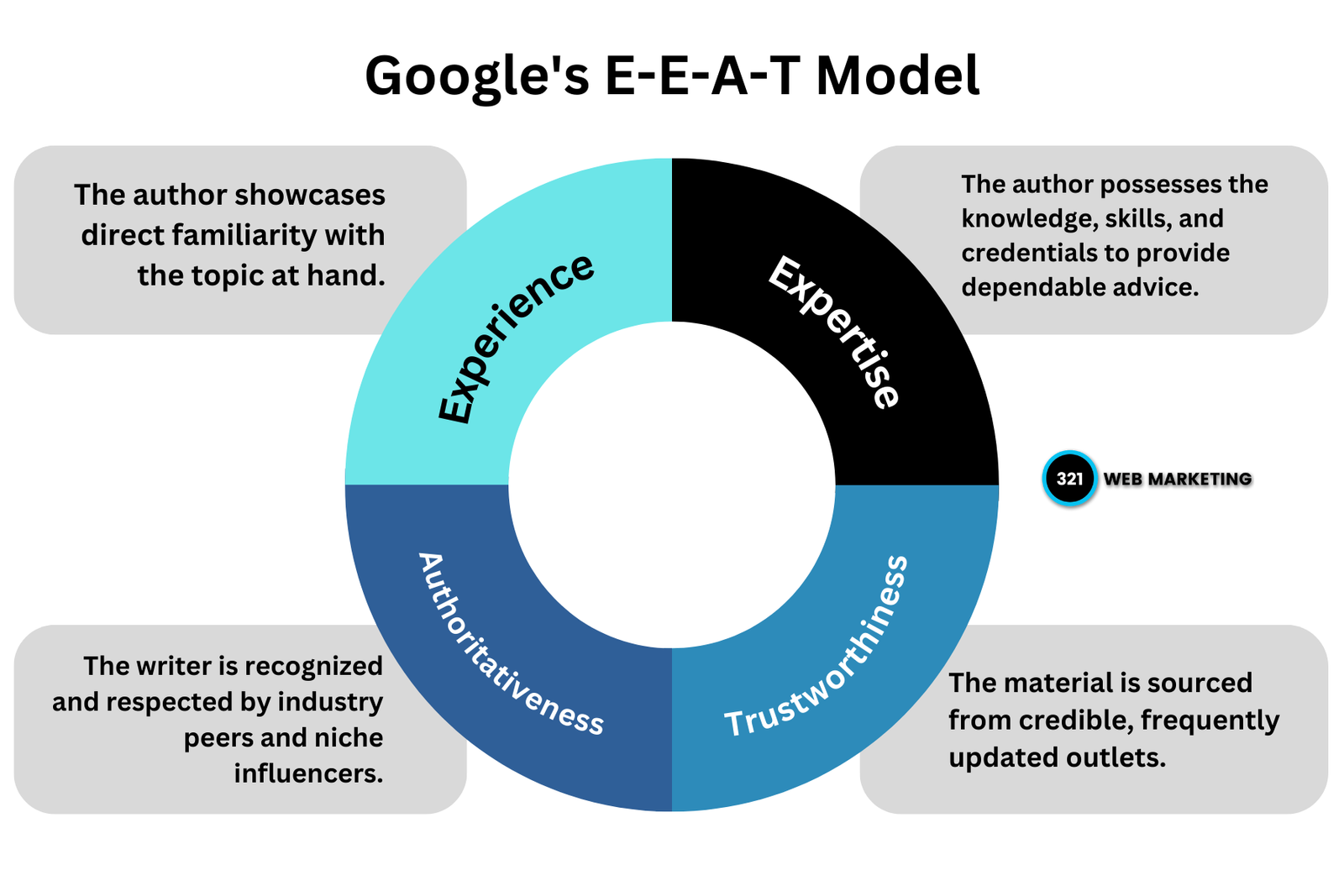
Here’s a breakdown of E.E.A.T:
- Experience: Does the author or website demonstrate firsthand knowledge or insights? For instance, travel blogs that include personal experiences or product reviews written by actual users showcase experience.
- Expertise: Does the content reflect in-depth knowledge of the subject? Articles written by certified professionals or specialists carry more weight in Google’s eyes.
- Authority: Is the website recognized as a credible source within its niche? Backlinks from reputable websites, positive reviews, and mentions in trusted publications enhance authority.
- Trust: Can users rely on the information provided? Transparency, accurate data, and secure website protocols (e.g., HTTPS) contribute to trustworthiness.
Content creators should integrate E.E.A.T by showcasing credentials, citing authoritative sources, and delivering accurate, actionable content.
How Google Evaluates Experience, Expertise, Authority, and Trust
Google uses both algorithmic signals and manual reviews to evaluate E.E.A.T. Key indicators include:
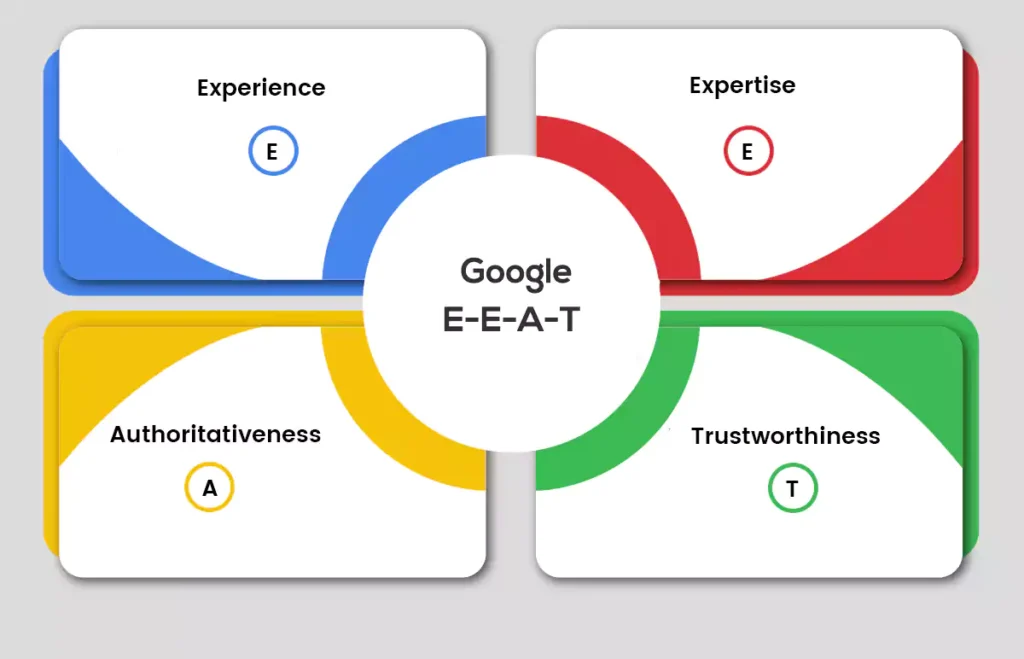
- Author Reputation: Articles written by experts or individuals with verified credentials rank higher, especially for YMYL topics.
- Source Credibility: Content that references reputable sources, such as government websites, peer-reviewed studies, or well-known publications, is seen as more trustworthy.
- User Feedback: Positive reviews, testimonials, and social proof contribute to a website’s perceived trustworthiness.
- Website Reputation: Factors like domain authority, backlink quality, and secure browsing (HTTPS) also play a role in E.E.A.T evaluation.
By aligning with E.E.A.T standards, you not only improve your chances of ranking higher but also build long-term credibility with your audience.
The Basics of SEO Content Writing
Before diving into advanced strategies, it’s essential to understand the basics of SEO content writing. These foundational principles ensure that your articles are optimized for both search engines and human readers.

What Makes Content SEO-Friendly?
SEO-friendly content is designed to rank well on search engines by incorporating strategic optimizations while providing value to readers. It strikes a balance between technical SEO, readability, and engagement.
Here’s what makes content SEO-friendly:
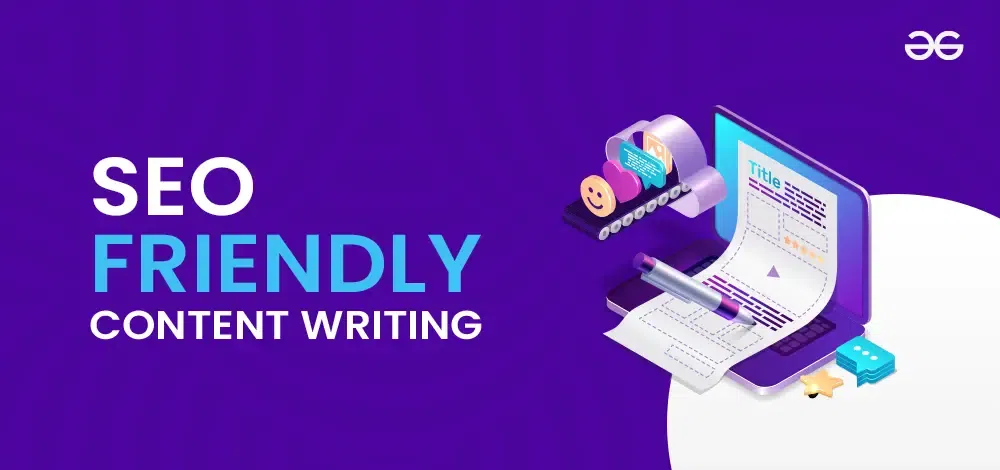
- Keyword Optimization: Using primary, secondary, and LSI keywords naturally throughout the content helps search engines understand the topic.
- Readability: Articles with clear formatting, short paragraphs, and simple language are easier for readers to digest and more likely to perform well.
- Value Addition: SEO content should answer questions, solve problems, or entertain the reader, ensuring they stay longer on the page.
- User Intent Alignment: Matching your content to the intent behind search queries (e.g., informational, transactional) improves relevance and ranking.
- Mobile Optimization: With the majority of searches coming from mobile devices, SEO content must be mobile-friendly to rank well.
The Importance of Keywords
Keywords are the foundation of SEO content. They act as a bridge between what users search for and the content you provide. To maximize their impact:
- Conduct thorough keyword research using tools like Google Keyword Planner, Ahrefs, or SEMrush.
- Choose a mix of short-tail (e.g., “SEO tips”) and long-tail keywords (e.g., “how to write SEO articles for beginners”).
- Place primary keywords strategically in the title, meta description, first 100 words, and subheadings.
- Use secondary keywords and synonyms to enhance context and avoid keyword stuffing.
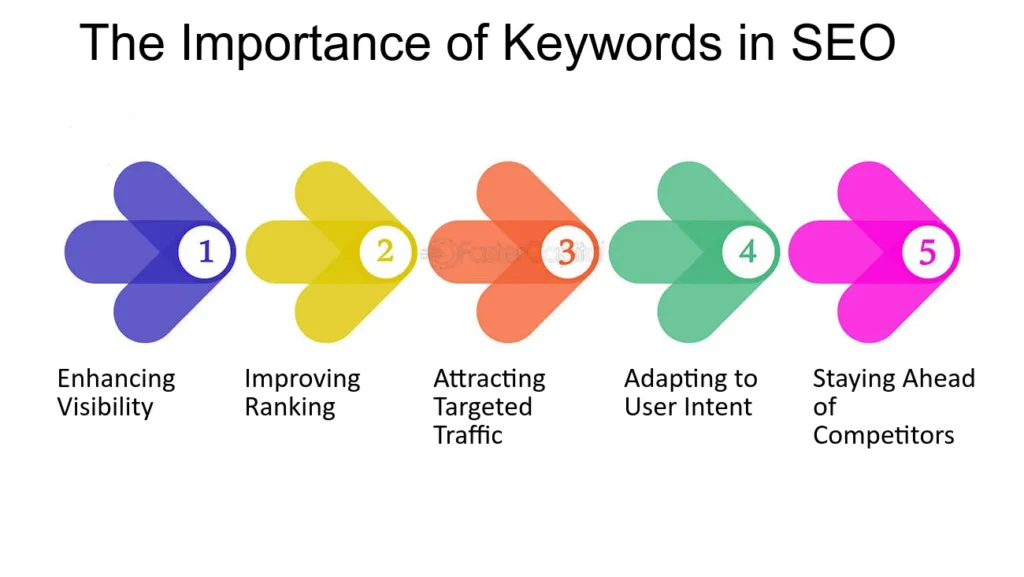
Effective keyword integration signals to Google that your content is relevant to user queries, increasing its chances of ranking high on SERPs.
Readability and User Engagement
Google prioritizes content that provides a positive user experience. Readability and engagement are key factors in retaining visitors and improving your rankings.
To enhance readability:
- Use short sentences and simple language to make complex topics accessible.
- Break up large blocks of text with subheadings, bullet points, and visuals.
- Incorporate transitional phrases (e.g., “On the other hand,” “In addition”) to guide readers smoothly through the article.
User engagement metrics, such as time on page, bounce rate, and click-through rate, also influence rankings. Content that captivates readers encourages them to stay longer, signaling to Google that your article is valuable and relevant.
Key Components of High-Ranking Content
High-ranking content doesn’t just meet SEO criteria; it goes above and beyond to provide value and build trust.
Quality Over Quantity in Content Writing
The days of producing thin, keyword-stuffed articles are long gone. Today, quality trumps quantity. A well-researched 2,000-word article with actionable insights will outperform a 500-word fluff piece every time.

Here’s how to prioritize quality:
- Conduct Thorough Research: Use credible sources to gather data, statistics, and case studies that support your points.
- Deliver Unique Insights: Share your own analysis, opinions, or experiences to offer something readers can’t find elsewhere.
- Eliminate Filler Content: Every sentence should add value. Remove redundant phrases and irrelevant tangents.
Quality content not only ranks higher but also builds loyalty among readers, who are more likely to return for future articles.
The Role of Visuals, Data, and Examples
Visual elements play a crucial role in making your content engaging and memorable. In fact, articles with visuals get 94% more views than those without.
Here’s how to use visuals effectively:
- Infographics: Simplify complex data into visually appealing graphics that are easy to understand.
- Charts and Graphs: Use these to illustrate trends, comparisons, or numerical data.
- Relevant Images: Include high-quality images that align with the content and enhance its meaning.
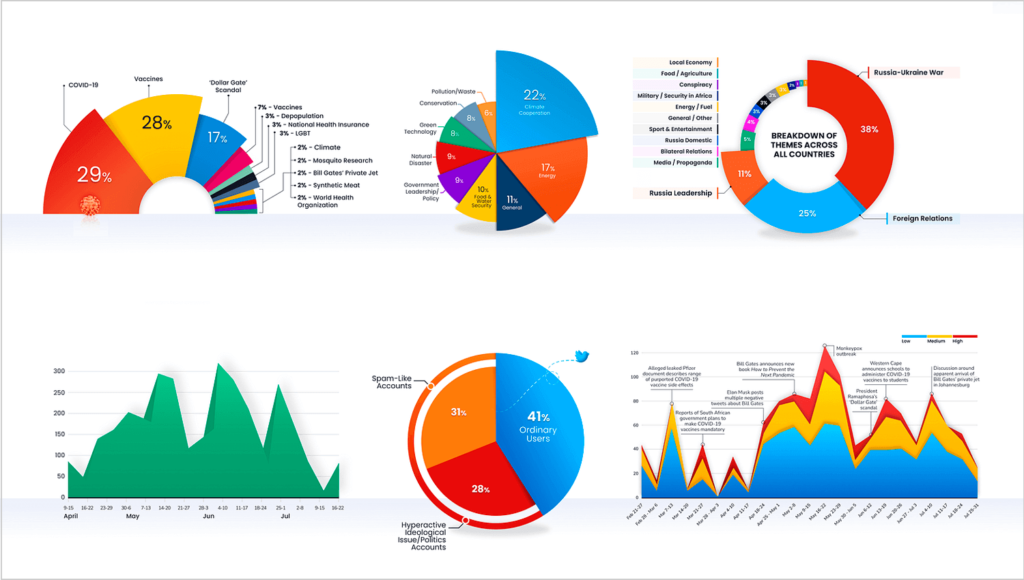
Additionally, use real-life examples, case studies, and success stories to make your points relatable and persuasive. For instance, if you’re writing about SEO strategies, include an example of a website that improved its rankings by implementing your tips.
Preparing to Write: Laying the Foundation
Before you begin writing an SEO article, it’s essential to lay a strong foundation. A lack of preparation often results in content that misses the mark for both readers and search engines. In this section, we’ll explore how to identify trending topics, understand search intent, and define your audience to ensure your content aligns with their needs and expectations.
Conducting Topic Research
Topic research is the first step in creating an SEO article that performs well. Without understanding what your audience wants or what is currently relevant in your niche, you risk producing content that fails to attract attention.

Identifying Trends with Tools like Google Trends
Google Trends is a powerful tool for identifying popular topics and emerging trends. It helps you understand what your target audience is searching for and when those searches peak.
Here’s how to use Google Trends effectively:
Search for Broad Topics: Start with a general keyword related to your niche (e.g., “SEO techniques”). Look at the search interest over time to see if the topic is gaining or losing popularity.
- Explore Related Queries: Google Trends suggests related keywords and topics that can inspire subtopics or article ideas.
- Filter by Location and Time Frame: Narrow down your search to specific regions or periods to create highly relevant content for your audience.
- Spot Seasonal Trends: Some topics, like “holiday marketing strategies,” are seasonal. Use this data to publish content at the right time for maximum impact.
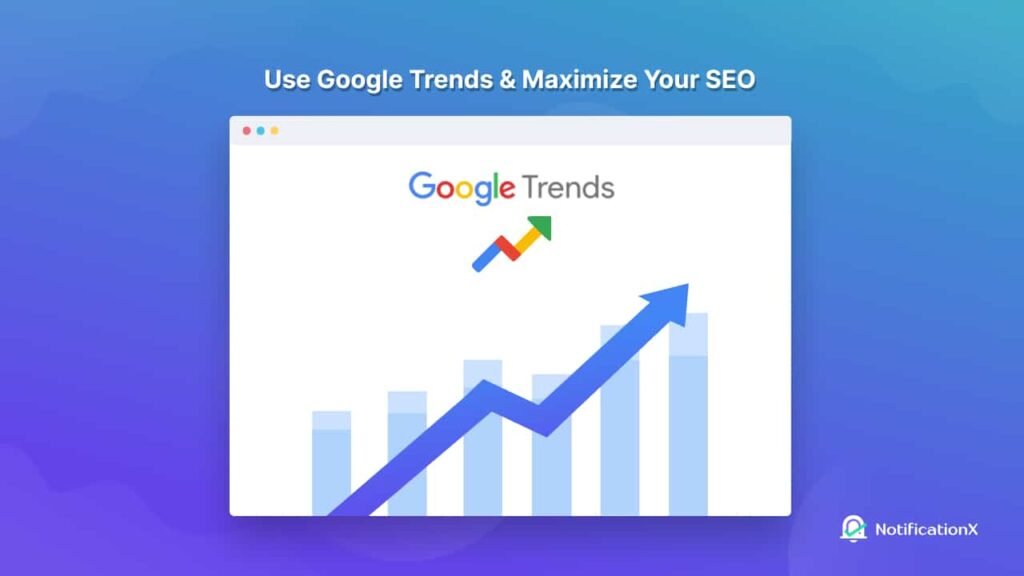
For example, if you’re targeting “content marketing,” you might find that interest spikes in January when businesses are planning their yearly strategies. Creating articles in advance of this trend ensures you capture early search traffic.
How to Use Competitor Analysis for Inspiration
Competitor analysis helps you uncover what works in your niche and where there are gaps you can fill. By studying top-performing content from competitors, you gain insights into successful strategies, including keyword targeting, content structure, and audience engagement techniques.
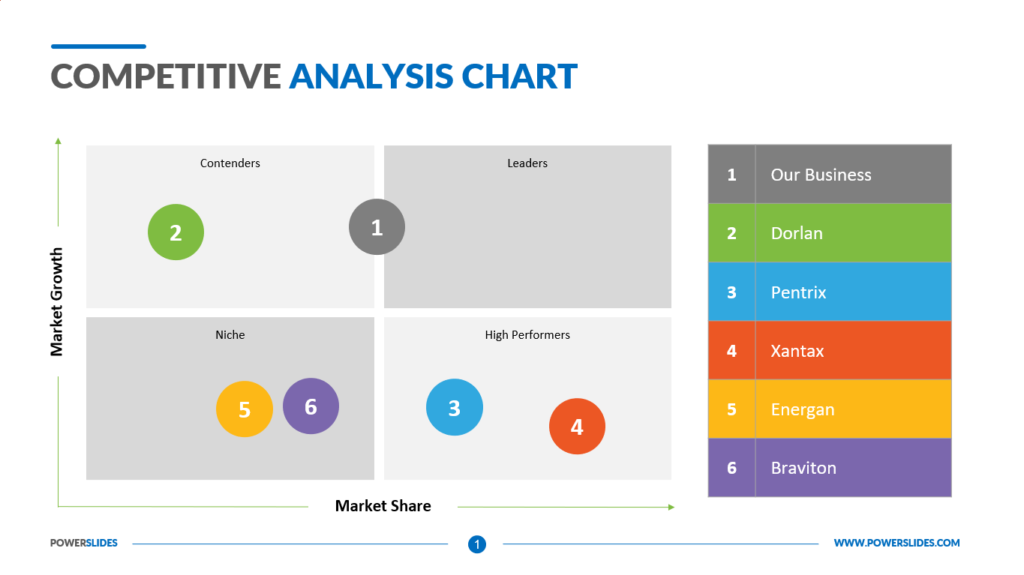
Steps for effective competitor analysis:
- Identify Top Competitors: Use tools like Ahrefs or SEMrush to find websites that rank for your target keywords.
- Analyze Their Content: Look at the format, word count, and tone of their articles. Pay attention to how they use visuals, internal links, and CTAs.
- Find Content Gaps: Determine what topics they haven’t covered or where their content lacks depth. For instance, if a competitor’s guide to “SEO tools” doesn’t include emerging technologies, you can create a more comprehensive version.
- Evaluate Engagement Metrics: Check the number of social shares, comments, or backlinks to gauge which articles resonate most with readers.
Remember, the goal isn’t to copy competitors but to improve upon their strategies and offer more value to your audience.
Understanding Search Intent
Search intent refers to the reason behind a user’s query. Google prioritizes content that aligns with the intent of the searcher, so understanding this concept is critical for creating high-ranking articles.

Informational, Navigational, and Transactional Searches
There are three main types of search intent:
- Informational: The user seeks knowledge or answers to a question (e.g., “What is SEO?”). Articles targeting informational intent should provide detailed explanations, how-to guides, or definitions.
- Navigational: The user wants to find a specific website or page (e.g., “Google Analytics login”). Content for navigational intent often includes branded keywords and clear pathways to the desired page.
- Transactional: The user is ready to take action, such as making a purchase or signing up for a service (e.g., “Buy SEO software”). Articles targeting transactional intent should include product comparisons, CTAs, and reviews.

When planning your content, match it to the dominant intent behind your target keywords. For instance, if the keyword “how to write an SEO article” is informational, your article should focus on providing a step-by-step guide rather than promoting a product.
Defining Your Audience
Knowing your audience is key to crafting content that resonates. If you don’t understand who you’re writing for, your content may miss the mark, resulting in low engagement and poor rankings.
Understanding Demographics and Interests
Use analytics tools like Google Analytics, Facebook Audience Insights, or LinkedIn Analytics to gather data on your target audience’s:
- Age: Are they millennials, Gen Z, or older professionals?
- Gender: Does your content need to cater to a specific demographic?
- Location: Where are they located, and how might this influence their needs?
- Interests: What topics, hobbies, or industries are they passionate about?
For example, if your audience consists of small business owners, they may value practical, cost-effective tips over complex technical advice. Tailoring your content to these preferences ensures it resonates deeply.

Addressing Their Pain Points
Your content should solve problems or address challenges your audience faces. To identify these pain points:
- Survey Your Audience: Use tools like Typeform or Google Forms to ask questions directly.
- Analyze Forum Discussions: Platforms like Reddit, Quora, or niche-specific forums are goldmines for understanding common concerns.
- Read Reviews: Customer reviews on competitor websites or industry products reveal frustrations and unmet needs.

For instance, if your audience struggles with time management for SEO, you could create an article titled “10 Time-Saving SEO Tips for Busy Entrepreneurs.” Addressing their challenges head-on builds trust and loyalty.
Structuring Your Article for SEO
A well-structured article is not only easier to read but also more likely to rank well on Google. Search engines use your content’s organization to determine its relevance and quality, making this step crucial for SEO success.
Creating an SEO-Friendly Title
Your article’s title is one of the most important elements for SEO. It influences both rankings and click-through rates, so crafting a compelling and optimized title is essential.

Placing Keywords Early in the Title
Always place your primary keyword near the beginning of the title. This not only helps search engines identify the article’s focus but also captures user attention. For example, instead of “Tips for Improving Your Website’s SEO,” use “SEO Tips to Improve Your Website Rankings.”
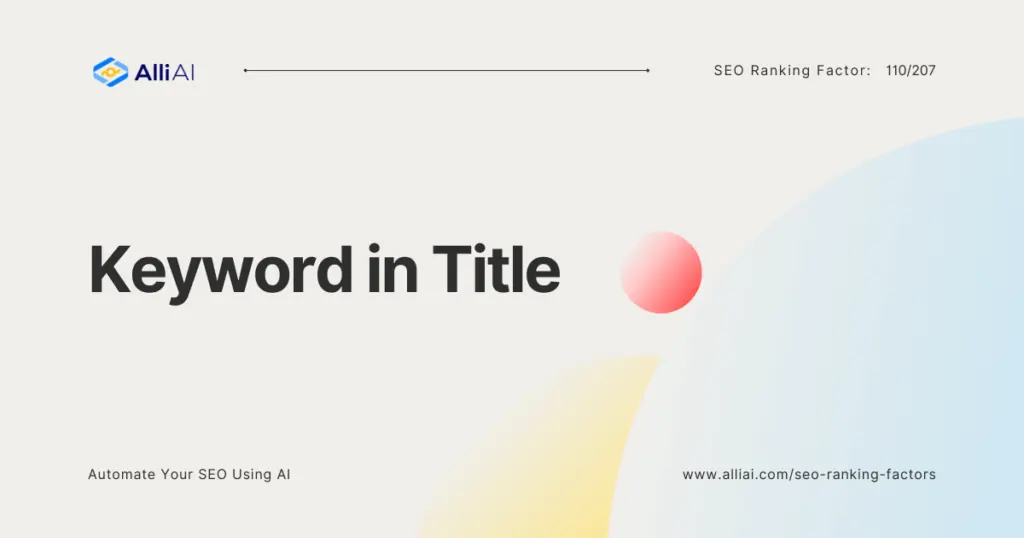
Making Titles Engaging and Click-Worthy
An engaging title entices users to click. Incorporate:
- Power Words: Words like “Ultimate,” “Proven,” or “Essential” add a sense of value.
- Numbers: Listicle titles like “7 SEO Strategies That Work” often perform well.
- Emotional Triggers: Phrases like “Secrets to” or “Never Fail Again” evoke curiosity.

For instance, “10 Proven SEO Techniques to Skyrocket Your Traffic” is more compelling than “SEO Techniques for Better Rankings.”
Using Subheadings for Better Organization
Subheadings enhance readability and help search engines understand your content’s structure. They allow readers to skim the article and find relevant sections quickly.
H2, H3, and H4 Tags: Their Role in SEO
Use heading tags to create a clear hierarchy:
- H2: Main topics (e.g., “Structuring Your Article for SEO”).
- H3: Subtopics within the main topic (e.g., “Using Subheadings for Better Organization”).
- H4: Supporting points under subtopics (e.g., “H2, H3, and H4 Tags: Their Role in SEO”).
This structure not only improves user experience but also helps search engines crawl and index your content more effectively.
Writing a Compelling Introduction
Your introduction sets the stage for the entire article. A strong opening keeps readers engaged and signals to search engines that your content is relevant.

Using a Hook to Capture Attention
Start with a hook that grabs attention immediately. This could be:
- A surprising statistic (e.g., “93% of all online experiences begin with a search engine”).
- A provocative question (e.g., “Are you struggling to rank your articles on Google?”).
- A relatable scenario (e.g., “Imagine spending hours on an article, only for it to rank on page 10 of Google.”).
Hooks draw readers in and encourage them to keep reading.
Setting Reader Expectations
After the hook, clearly outline what your article will cover. For example:
“In this guide, we’ll explore how to write SEO articles that rank high on Google, from mastering keyword research to optimizing for mobile users. By the end, you’ll have the tools to create content that drives traffic and boosts engagement.”
Setting expectations reassures readers that they’ll find the answers they’re looking for.
Writing Your SEO Article: Step by Step
Once the foundation is set, the actual writing process begins. Each part of your article should serve a specific purpose: the introduction captures attention, the body delivers value, and the conclusion leaves a lasting impression. By following a structured approach, you can create an article that is both engaging and highly optimized for search engines.

The Power of an Engaging Introduction
Your introduction is the first impression your article makes on the reader. It sets the tone and determines whether they will continue reading or bounce to another page. A strong introduction accomplishes three key goals: grabbing attention, addressing the reader’s problem, and offering a clear promise of value.

Grabbing Attention with a Hook
A hook is the opening statement or question that immediately grabs your reader’s attention. Hooks can take various forms, such as:
- Statistics: “Did you know that 68% of online experiences begin with a search engine?”
- Questions: “Struggling to write SEO articles that rank on Google? You’re not alone.”
- Relatable Scenarios: “You’ve spent hours writing an article, only to see it languish on page two of Google. Sound familiar?”
- Bold Statements: “Ranking on Google isn’t as hard as everyone says—it’s just about knowing the rules.”
A well-crafted hook sparks curiosity and makes readers eager to learn more.
Addressing the Reader’s Problem
After the hook, acknowledge the reader’s pain points. This builds trust and shows empathy for their situation. For example:
“Many writers struggle with creating content that satisfies both readers and search engines. It can feel impossible to balance keyword integration with natural, engaging prose. But the good news is, it’s entirely possible—and I’ll show you how.”
By addressing their problem directly, you establish yourself as someone who understands their needs and has the solution.
Offering a Clear Promise of Value
The final part of the introduction should outline what the reader will gain by continuing. For instance:
“In this article, you’ll learn step-by-step how to write SEO articles that not only rank high on Google but also captivate your audience. From mastering keyword strategies to crafting engaging content, we’ll cover it all.”
This gives readers a reason to stay and ensures they know the article is worth their time.
Crafting Valuable Body Content
The body of your article is where the magic happens. This is your opportunity to deliver on the promises made in the introduction, educate your readers, and establish authority in your niche.

Integrating Data and Statistics
Data and statistics are powerful tools for building credibility. They provide evidence to support your claims and make your content more authoritative. Here’s how to use them effectively:
1. Cite Reputable Sources: Always use data from trusted organizations, such as government agencies, research institutions, or industry leaders.
2. Provide Context: Don’t just drop a statistic—explain why it matters. For example:
- Instead of: “68% of all online experiences begin with a search engine.”
- Say: “This statistic highlights the importance of ranking on search engines like Google, as they are often the first touchpoint for potential customers.”
3. Use Visuals: Present complex data through charts, graphs, or infographics for better comprehension.
- Statistics not only enhance the quality of your content but also make it more shareable and link-worthy.
Quoting Experts for Authority
Incorporating expert quotes or insights strengthens your article’s credibility and aligns with Google’s E.E.A.T standards. Here’s how to do it:

- Choose Recognized Experts: Quote industry leaders, authors, or academics who have authority in your topic area.
- Use Direct Quotes: Instead of paraphrasing, include direct quotes to retain the expert’s voice and add authenticity.
- Provide Proper Attribution: Always mention the expert’s name, title, and organization to establish credibility.
For example: “According to Neil Patel, a leading digital marketing expert, ‘The key to successful SEO is creating content that resonates with both users and search engines.’”
Expert quotes not only add weight to your arguments but also make your content more engaging and informative.
Including Real-Life Examples or Case Studies
Examples and case studies make abstract concepts tangible. They provide real-world context and demonstrate how the strategies you’re discussing work in practice.
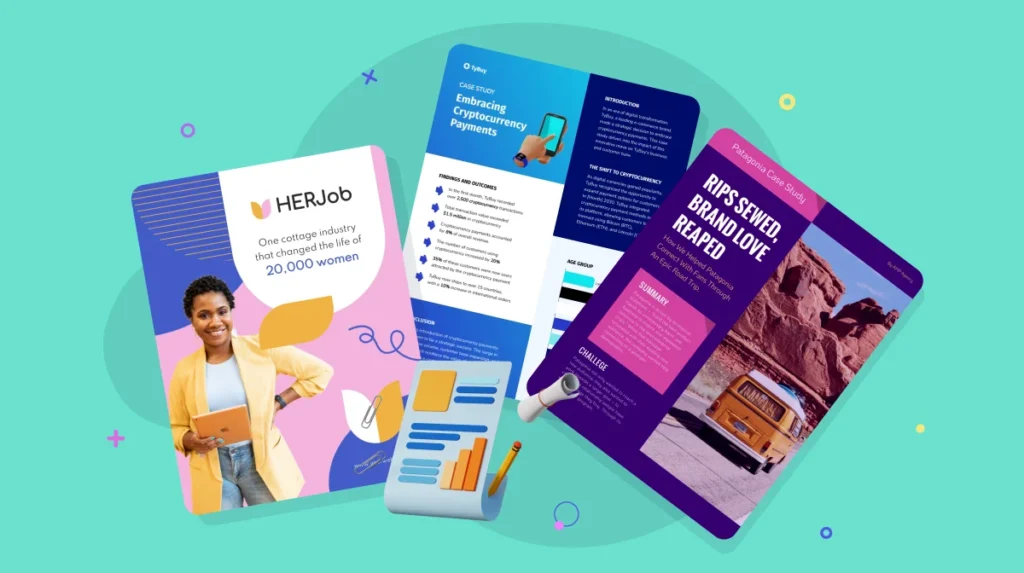
For instance, if you’re writing about improving SEO rankings, you could include a case study like this: “Company XYZ implemented a content strategy focused on long-tail keywords and user intent. Over six months, their organic traffic increased by 85%, and their conversion rates doubled. This demonstrates the power of aligning content with search intent.”
Real-life examples also make your content more relatable, helping readers visualize how they can apply the insights to their own situations.
Writing an Effective Conclusion
The conclusion is your chance to leave a lasting impression and guide readers toward the next steps. A well-crafted conclusion summarizes key points, reinforces the article’s value, and includes a call-to-action (CTA).
Summarizing Key Points
Recap the main takeaways of your article to reinforce the information and ensure readers remember the most important details.
For example: “In this guide, we’ve covered the essential steps for writing SEO articles that rank high on Google. From understanding search intent and conducting thorough research to crafting compelling introductions and optimizing for on-page SEO, each step plays a vital role in your success.”
A concise summary helps readers feel that they’ve gained valuable knowledge and makes the content feel complete.
Adding a Call-to-Action (CTA)
Every article should end with a clear call-to-action, encouraging readers to take the next step. CTAs can vary depending on your goals, such as:
- Engagement: “If you found this guide helpful, share it with your network or leave a comment below with your thoughts.”
- Conversions: “Ready to take your SEO skills to the next level? Sign up for our advanced SEO course today.”
- Further Exploration: “For more tips on mastering SEO, check out our related articles on keyword research and on-page optimization.”
A strong CTA keeps readers engaged with your content and increases the likelihood of achieving your goals, whether that’s generating leads, building a community, or driving traffic to other pages.
Optimizing Your Article for Search Engines
Writing great content is only half the battle. To ensure it ranks well, you must optimize it for search engines. From keyword integration to technical on-page SEO, these strategies will help your article climb the SERPs.
Keyword Integration Strategies
Keywords are the backbone of SEO. They help search engines understand your content and match it with user queries. However, improper keyword usage can lead to penalties or poor user experience.
Primary Keywords vs. Secondary Keywords
Primary keywords are the main focus of your article, while secondary keywords provide additional context and target related searches. For example:
- Primary Keyword: “SEO content writing.”
- Secondary Keywords: “how to write SEO articles,” “SEO writing tips,” “SEO-friendly content.”
To use them effectively:
- Place Primary Keywords Strategically: Include them in the title, meta description, first 100 words, and at least one subheading.
- Distribute Secondary Keywords Naturally: Use these throughout the body to enhance relevance without overloading the text.
Using LSI Keywords Naturally
Latent Semantic Indexing (LSI) keywords are terms related to your primary keyword that help search engines understand the context of your article. For instance, if your primary keyword is “SEO tips,” LSI keywords might include “on-page optimization,” “backlink strategies,” or “content marketing.”
Strategies for incorporating LSI keywords:
- Use them in subheadings, bullet points, and examples.
- Don’t force them—focus on maintaining natural readability.
By including LSI keywords, you increase your content’s relevance and prevent keyword stuffing.
Enhancing Reader Engagement
Engaging content is critical to retaining readers and encouraging them to interact with your website. Engagement metrics such as time on page, bounce rate, and scroll depth not only reflect user satisfaction but also influence your search rankings. This section explores techniques to captivate readers and keep them coming back for more.
Using Lists and Bullet Points
Lists and bullet points are powerful tools for breaking down information into easily digestible chunks. They improve readability and help readers quickly find key takeaways.
Why Scannable Content Retains Readers
In the digital age, attention spans are short. Many readers scan articles to find the most relevant information before committing to reading in-depth. Scannable content, like lists and bullet points, caters to this behavior:
- Quick Access: Readers can immediately identify important points without wading through dense paragraphs.
- Visual Breaks: Lists create white space, making your article visually appealing and less intimidating.
- Logical Organization: Grouping related items in a list makes complex ideas easier to understand.
For example, consider these two formats: Dense Paragraph: “SEO articles should include primary keywords in titles, meta descriptions, and introductions. Secondary keywords should be distributed throughout the body. Ensure natural keyword usage to avoid penalties.”
Bullet Points:
- Include primary keywords in titles, meta descriptions, and introductions.
- Distribute secondary keywords throughout the body.
- Ensure natural keyword usage to avoid penalties.
The bullet point version is more reader-friendly and visually appealing.
Visual Elements in Content
Visuals are essential for enhancing the user experience. They break up text, support key points, and make your content more engaging.
How Images and Infographics Enhance SEO
Images and infographics do more than beautify your article; they improve its SEO performance. Here’s how:
- Increased Engagement: Articles with visuals are more likely to capture attention and reduce bounce rates.
- SEO Value: Optimized images with keyword-rich alt text can rank in Google’s image search, driving additional traffic.
- Clarity: Infographics simplify complex information, making it easier for readers to understand and share.
To maximize the impact of visuals:
- Choose Relevant Images: Ensure all visuals align with the content and add value.
- Optimize File Sizes: Compress images to improve page load speed without sacrificing quality.
- Use Descriptive Alt Text: Write alt text that describes the image and includes relevant keywords for accessibility and SEO.
For example, in an article about “SEO tools,” an infographic comparing the top five tools based on features and pricing would enhance both engagement and SEO performance.
Maintaining Consistent Style and Tone
Consistency in style and tone builds trust and enhances readability. Readers are more likely to engage with content that feels polished and cohesive.
Writing with Clarity and Professionalism
Clear, professional writing ensures your message is easily understood. To achieve this:
- Avoid Jargon: Use plain language unless writing for a specialized audience.
- Edit Ruthlessly: Cut unnecessary words and focus on delivering value.
- Use Active Voice: Write in an active voice to make sentences more direct and engaging.
For example:
- Passive: “The article was read by thousands of users.”
- Active: “Thousands of users read the article.”
Clarity and professionalism establish you as a trustworthy authority, encouraging readers to explore more of your content.
Maintaining Content Quality and Originality
High-quality, original content is the backbone of SEO success. Google prioritizes unique, valuable articles over plagiarized or generic content, making it essential to maintain originality and attention to detail.

Avoiding Plagiarism
Plagiarism damages your credibility and can lead to penalties from Google. Ensuring originality is non-negotiable for SEO content.
How to Ensure Unique Content
Here are strategies to create unique articles:
- Use Multiple Sources: Research from various reputable sources and synthesize the information into original insights.
- Run Plagiarism Checks: Use tools like Copyscape or Grammarly to ensure your content is 100% unique.
- Add Personal Perspectives: Share your own experiences, opinions, or case studies to differentiate your article.
For example, instead of simply listing SEO tips, include anecdotes about how a specific strategy worked for your business or clients.
Adding Original Insights
Originality goes beyond avoiding plagiarism; it involves providing fresh perspectives and actionable advice.
Providing Fresh Analysis and Unique Angles
To stand out in a crowded content landscape:
- Offer Unique Angles: Cover familiar topics from a new perspective. For instance, instead of writing “SEO Tips for Beginners,” try “SEO Mistakes Beginners Make and How to Avoid Them.”
- Analyze Industry Trends: Share your take on emerging trends or predictions, backed by data or expert opinions.
- Develop Proprietary Data: Conduct surveys or analyze internal metrics to create original research that others will reference.
Unique content establishes your authority and encourages backlinks, boosting your SEO performance.
Proofreading and Editing
Even the best ideas can be undermined by typos, grammatical errors, or awkward phrasing. Editing is the final step to ensure your content is polished and professional.
Tools for Catching Errors
Use these tools to proofread and edit your content:
- Grammarly: Detects grammar mistakes, typos, and readability issues.
- Hemingway Editor: Highlights complex sentences and suggests simplifications.
- Google Docs: Leverages built-in spelling and grammar checks.
Always review your content manually, as automated tools may miss nuanced errors or misinterpret context.
Polishing Your Content for Readability
Beyond fixing errors, focus on improving flow and clarity:
- Eliminate Redundancies: Avoid repeating points unless necessary for emphasis.
- Refine Transitions: Use transitional phrases to guide readers through the article.
- Test Readability: Read your article aloud to catch awkward sentences and ensure a natural tone.
A polished article not only improves user experience but also signals to Google that your content is high-quality.
Post-Publication Strategies
The work doesn’t end once your article is published. Promoting your content, tracking its performance, and updating it over time are crucial for maximizing its impact and maintaining rankings.

Promoting Your Article
Publishing your article is just the first step; promoting it ensures it reaches a wider audience.
Sharing on Social Media Platforms
Social media platforms amplify your article’s reach and drive traffic to your website. To promote effectively:
- Customize Posts for Each Platform: Tailor your headlines, images, and hashtags for platforms like LinkedIn, Twitter, Facebook, or Instagram.
- Use Visuals: Posts with eye-catching images or videos get more engagement.
- Engage with Comments: Respond to readers’ questions or feedback to build a loyal community.
For instance, if you publish an article on “SEO trends for 2024,” create a LinkedIn post summarizing the key points with a link to the full article.
Building Backlinks Through Outreach
Backlinks from authoritative websites improve your article’s credibility and rankings. To build backlinks:
- Reach Out to Industry Blogs: Offer your article as a resource for their readers.
- Create Linkable Assets: Develop infographics, original research, or in-depth guides that others want to reference.
- Guest Post: Write for other websites in your niche and include links back to your content.
A proactive outreach strategy ensures your content gains visibility and authority over time.
Updating Content Regularly
Google favors fresh content. Updating your articles ensures they remain relevant and continue to rank well.
Adding New Data or Examples Over Time
Monitor industry developments and incorporate new data, examples, or case studies into your articles. For example, an article about “SEO tools” from 2022 might need updates to include newly released tools or features in 2024.
Reoptimizing Keywords
Use tools like Ahrefs or SEMrush to track your article’s keyword performance. If rankings drop, consider reoptimizing for newer, high-performing keywords or adjusting your content to better match search intent.
Tracking Performance Metrics
Analyze your article’s performance to understand what works and where improvements are needed.
Tools for Monitoring Traffic and Rankings
Use these tools to track performance:
- Google Analytics: Monitor page views, bounce rate, and time on page.
- Google Search Console: Track keyword rankings and click-through rates.
- Ahrefs/SEMrush: Analyze backlinks, traffic trends, and keyword performance.
Regularly reviewing metrics helps you refine your strategy and maintain consistent growth.
Frequently Asked Questions (FAQs)
Conclusion
Creating SEO articles that rank high on Google is a multi-step process that combines research, optimization, and consistent quality. By understanding search intent, mastering keyword strategies, and engaging readers with valuable content, you can achieve lasting success in the competitive digital landscape.
Disclosure: Our blog contains affiliate links to products. We may receive a commission for purchases made through these links. However, this does not impact our reviews and comparisons. We try our best to keep things fair and balanced, in order to help you make the best choice for you.






